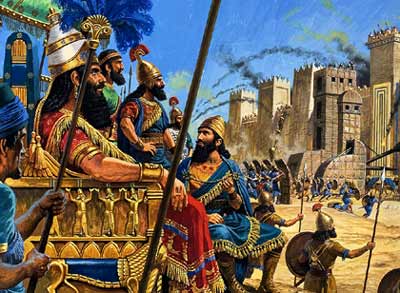Pros and cons of Hammurabi laws.
Positive features of the laws of Hammurabi
* Improvement of the position of the lowest class of Babylonian society – Vardum (local name for slaves). Unlike many other states and entities of that time, by law, slaves were allowed to marry members of the higher strata of the population. The children retained the rights and privileges of a higher class. Such an article insignificantly, but improved the still unenviable position of the Vardums, reduced social tensions and slightly humanized slaves in the eyes of other inhabitants of Babylon.
* Legislative establishment of a limitation of the terms of being in slavery for persons who fell into it because of debts to usurers. In ancient Babylon, it was surprisingly easy to fall into slavery. It was enough not to return the debt to the creditor and he had the right to take any member of the debtor’s family into slavery. And without any restrictions. Regardless of the amount of debt. The laws of Hammurabi fixed a term of 3 years and established a ban on the killing of such slaves (according to the customs of those times, the killing of a slave was considered not a loss of life, but material damage in the form of damage to property).
* Material support for the families of the dead soldiers. A very important law for the normal functioning of Babylonian society. Hammurabi became famous not only for his code of laws, but also for the unification of the entire territory of Mesopotamia in one state. The subjugation of devastated tribes and communities required the use of brute military force. * Accompanied by heavy losses among the Babylonian soldiers. Many families were left without breadwinners. Despite the usual picture with constant wars around the world, it was in the laws of Hammurabi that the first social assistance for the families of the victims was first laid down.
Creating a prototype for the presumption of innocence. In one of the articles of the laws of Hammurabi, it was argued that a person who was not caught at the scene of a crime cannot be recognized as a thief. This is simple: “not caught – not a thief” can be viewed as the first brick of the foundation of one of the most important institutions of modern criminal and civil law.
* Securing severe responsibility for knowingly giving false testimony. Naturally, the wording was not so pretentious, but its essence boiled down to a simple situation: if you accuse a person of murder and it turns out that he is innocent, then you yourself will be executed. A good incentive to be more selective and courteous in a controversial and controversial situation. Protected honest people from slander from ill-wishers.
 Negative features of the laws of Hammurabi
Negative features of the laws of Hammurabi
* Water test as one of the types of evidence in legal proceedings. In addition to testimony, which was the main way to establish the truth in a dispute, the water test was also widely used. The essence of the “proof” was as follows: the accused of a crime was thrown into the water with a strong current. If he did not drown, but survived, then he was considered innocent. In the opposite case, guilt was considered proven through divine intervention. In fact, no matter how difficult it is to guess, the water test only proved the ability of a person to swim and it is difficult to consider him a real evidence of innocence.
* A significant number of very severe punishments. Unlike modern legislation, the laws of Hammurabi contained a large number of acts for which the execution was due. It is especially sad that theft was also listed among them. Stole a peach – you can legally take your life. The proportionality of the crime and punishment was not traced. Clarification of the context of the situation also did not play a role.
* The Talion principle is the main type of punishment. The tradition of inflicting the same kind of negative consequences on the offender that was committed in relation to the victim has migrated from the primitive system. Monetary fines were still far away, because a knocked out tooth had to be paid for with one’s own tooth. “An eye for an eye” is not the most optimal form of punishment, even for a fairly ancient society.
* The plight of slaves. The laws of Hammurabi made it possible to somewhat bring the legal status of the lowest level of Babylon society closer to the lower strata of the population, but it was still very far from fundamental changes. Slaves were still more regarded as tools and things, rather than full-fledged people. For verbally insulting a member of the upper class, Vardum’s ear was cut off.
* Unequal rights between representatives of formally free estates. It was expressed in a much smaller volume of personal rights of the Muskenums in comparison with the Avilums. If the muskenum inflicted physical damage on the avilum, then the amount of punishment was determined on the basis of the Talion principle. When changing roles, Avilum was simply charged a monetary fine.
Conclusions: The laws of Hammurabi played a significant role in the origin and formation of the legal system and the gradual replacement of primitive customs with specific laws. They contained a series of breakthrough clauses that enabled more modern legislators to create ever better rules and regulations based on the experience of Babylonian law enforcement. Most of the shortcomings of the code of laws of King Hammurabi are dictated by the spirit of the time and the customs of those years.


